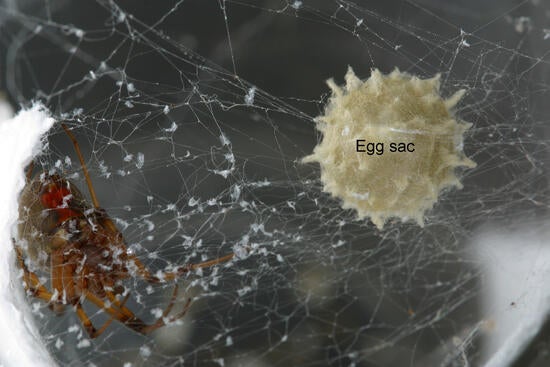1. Spider behavior
We study spider behavior.
2. Insecticide and spider control
Information on pesticide effects on spiders is less common than for insects; similar information for spider egg sacs is scarcer in the open literature. Spider egg sacs are typically covered with a protective silk layer. When pesticides are directly applied to egg sacs, the silk might prevent active ingredients from reaching the eggs, blocking their insecticidal effect.
We recently investigated the impact of six water-based pesticide sprays and four oil-based aerosol products against egg sacs of brown widow spiders,Latrodectus geometricus C. L. Koch. All water-based spray products except one failed to provide significant mortality to egg sacs, resulting in successful spiderling emergence from treated egg sacs at a similar rate to untreated egg sacs. In contrast to water-based sprays, oil-based aerosols provided almost complete control, with 94–100% prevention of spiderling emergence. Penetration studies using colored pesticide products indicated that oil-based aerosols were significantly more effective in penetrating egg sac silk than were the water-based sprays, delivering the active ingredients on most (>99%) of the eggs inside the sac. The ability of pesticides to penetrate spider egg sac silk and deliver lethal doses of active ingredients to the eggs might be related with the chemical nature of egg sac silk proteins.
3. Spider IPM
We study spider IPM.

